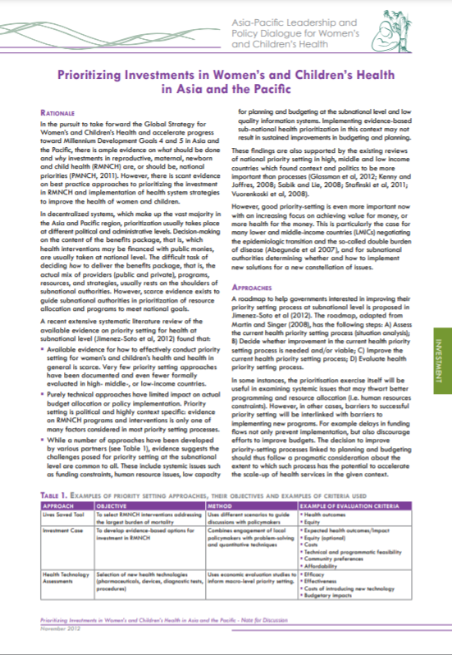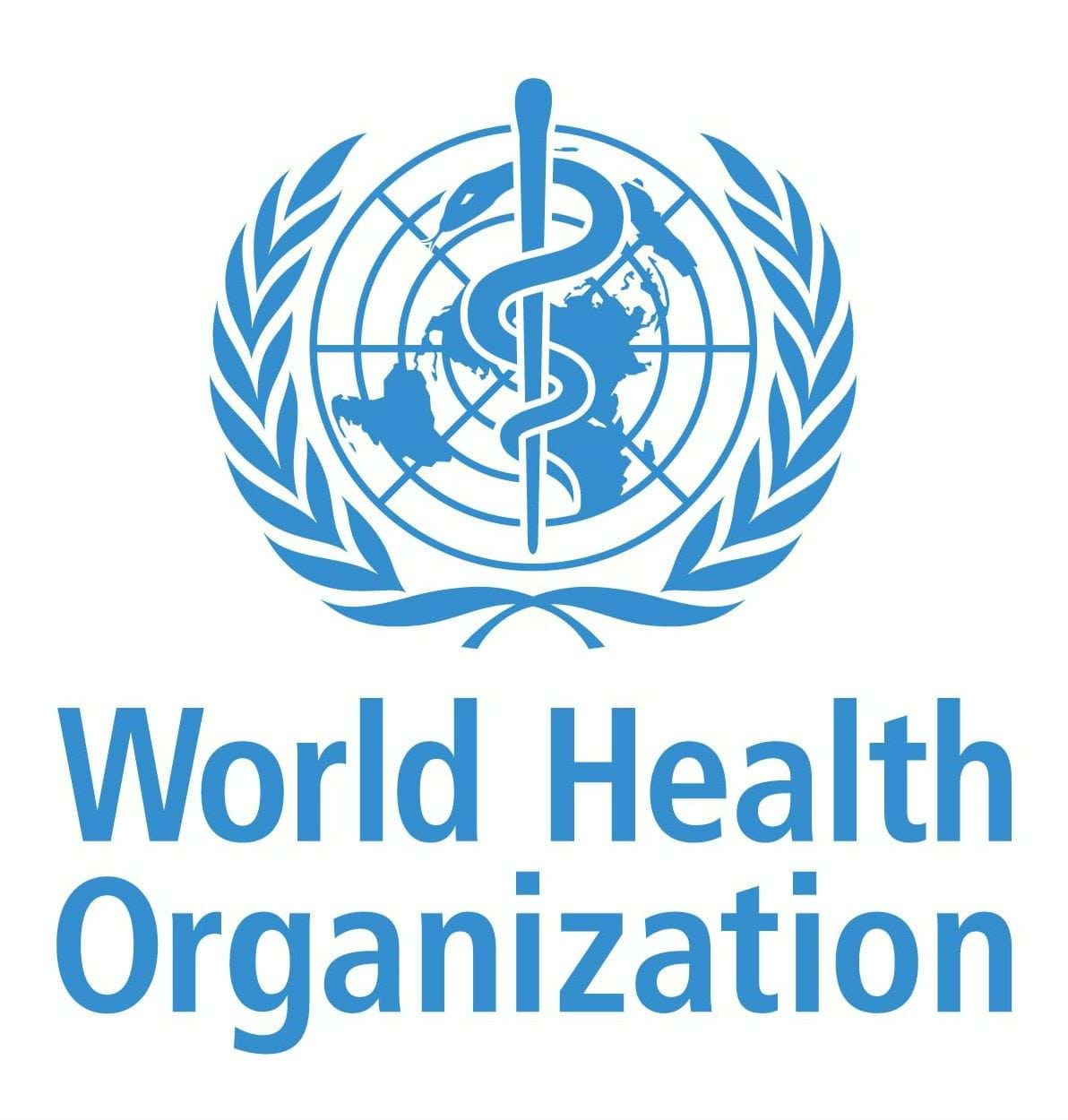Prioritizing investments in women’s and children’s health in Asia and the Pacific

Overview
In the pursuit to take forward the Global Strategy for
Women’s and Children’s Health and accelerate progress
toward Millennium Development Goals 4 and 5 in Asia and
the Pacific, there is ample evidence on what should be done
and why investments in reproductive, maternal, newborn
and child health (RMNCH) are, or should be, national
priorities (PMNCH, 2011). However, there is scant evidence
on best practice approaches to prioritizing the investment
in RMNCH and implementation of health system strategies
to improve the health of women and children.
In decentralized systems, which make up the vast majority in
the Asia and Pacific region, prioritization usually takes place
at different political and administrative levels. Decision-making
on the content of the benefits package, that is, which
health interventions may be financed with public monies,
are usually taken at national level. The difficult task of
deciding how to deliver the benefits package, that is, the
actual mix of providers (public and private), programs,
resources, and strategies, usually rests on the shoulders of
subnational authorities. However, scarce evidence exists to
guide subnational authorities in prioritization of resource
allocation and programs to meet national goals.

.png?sfvrsn=6d0e27cd_1)



